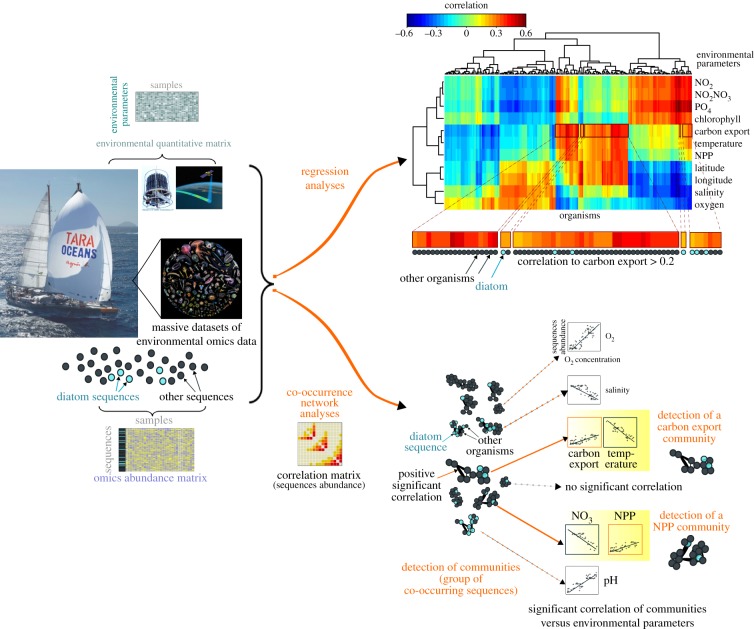Figure 5.
A new context for marine ecosystems biology. High-throughput sequencing technologies nowadays allow the production of massive omics datasets (meta-genomics, meta-transcriptomics, meta-barcoding datasets) from microbial planktonic communities. Such massive datasets can be analysed in parallel with large quantitative matrices of environmental data, and have notably produced a first global picture of microbial organisms correlating with carbon export in oligotrophic oceans [83]. In the framework of the biological carbon study, bioinformatics analyses thus help to establish on one hand the list of the most correlated lineages to NPP (Net Primary Production) or carbon export (e.g. using regression analyses such as sparse partial least square (sPLS) analysis; upper part of the figure), or to detect the communities linked to NPP and carbon export (e.g. using co-occurrence network analyses such as weighted correlation network analyses; lower part of the figure; see more details on methods in Guidi et al. [83]). Today, the roles of diatoms in the oceans can thus be considered in a global and integrative context.

